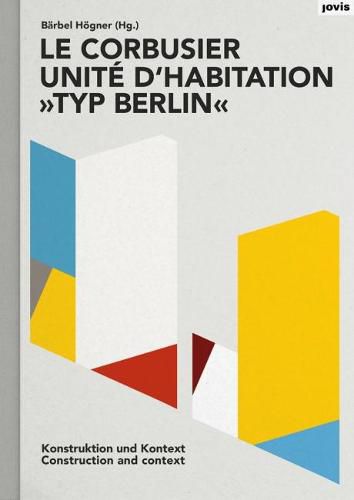Readings Newsletter
Become a Readings Member to make your shopping experience even easier.
Sign in or sign up for free!
You’re not far away from qualifying for FREE standard shipping within Australia
You’ve qualified for FREE standard shipping within Australia
The cart is loading…






Le Corbusier’s Unite d'habitation in Berlin (built 1957-58) stands as an exceptional monument within Berlin’s post-war architecture. The gigantic building with 530 apartments follows the basic ideas of a ‘vertical village’ as envisioned by the architect. However, modifications according to German by-laws led to an outsider position within his oeuvre. This volume explores the exceptional house through multiple perspectives, hereby gathering authors from the fields of architecture, urbanism, art history and cultural studies. For the first time a precise research into the history and construction is given at length, complemented by various design and urbanist contexts and discourses. These include the origin and development of the split-level apartment block itself, a comparison with the four related buildings of the typology Unite d'habitation in France, and Le Corbusier’s colour concept ‘Polychromy’. Looking at the meaning, imagination and creative impact of his unique realisation in Berlin, Le Corbusier: Unite d'habitation ‘Typ Berlin’ fills a void within the literature on post-war modernism and Le Corbusier’s complete works. AUTHOR: Barbel Hogner is an Ethnolgist and photographer, and has a specialised knowledge of Le Corbusier. SELLING POINT:
Explores Le Corbusier’s Unite d'habitation - or Housing Unit - in Berlin, covering the history and construction of the building, as well as the creative impact that the house had on the city of Berlin itself 180 colour images
$9.00 standard shipping within Australia
FREE standard shipping within Australia for orders over $100.00
Express & International shipping calculated at checkout
Le Corbusier’s Unite d'habitation in Berlin (built 1957-58) stands as an exceptional monument within Berlin’s post-war architecture. The gigantic building with 530 apartments follows the basic ideas of a ‘vertical village’ as envisioned by the architect. However, modifications according to German by-laws led to an outsider position within his oeuvre. This volume explores the exceptional house through multiple perspectives, hereby gathering authors from the fields of architecture, urbanism, art history and cultural studies. For the first time a precise research into the history and construction is given at length, complemented by various design and urbanist contexts and discourses. These include the origin and development of the split-level apartment block itself, a comparison with the four related buildings of the typology Unite d'habitation in France, and Le Corbusier’s colour concept ‘Polychromy’. Looking at the meaning, imagination and creative impact of his unique realisation in Berlin, Le Corbusier: Unite d'habitation ‘Typ Berlin’ fills a void within the literature on post-war modernism and Le Corbusier’s complete works. AUTHOR: Barbel Hogner is an Ethnolgist and photographer, and has a specialised knowledge of Le Corbusier. SELLING POINT:
Explores Le Corbusier’s Unite d'habitation - or Housing Unit - in Berlin, covering the history and construction of the building, as well as the creative impact that the house had on the city of Berlin itself 180 colour images